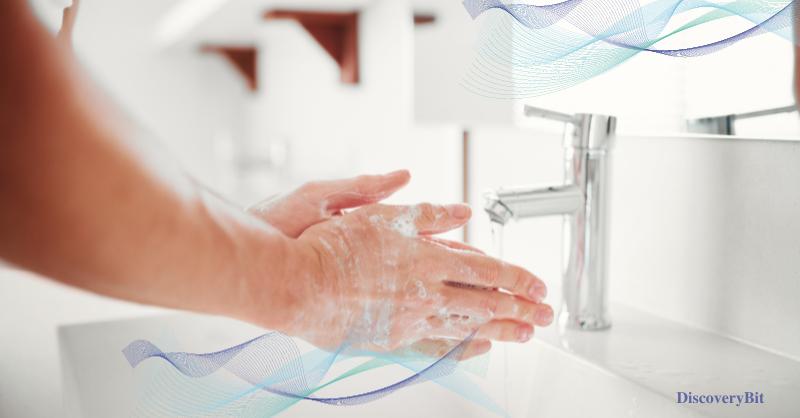Germs, germs everywhere! They’re microscopic troublemakers, lurking in every corner, on every surface, and even on our hands. These minuscule troublemakers, invisible to the naked eye, go by many names—viruses, bacteria, and pathogens—but they all have one thing in common: they love to make us sick.
But fear not! Our immune system is a superhero, battling these germs daily. However, it is important to note some of these germ riddled surfaces and places so that extra care could be taken to mitigate the impact of the germs.
This post, in other to instill awareness, will present a list of the 21 germiest places that we can’t avoid including recommendation, towards the end, on how to reduce germ infections.
1) Mouth:
Yep, we all have one, and it’s a germ haven! Even if we lived in a sterile bubble, our mouths would still be bustling with bacteria. Surprisingly, there are more harmful bacteria in our mouths than on a dog’s snout! Even the cleanest mouth is riddled with hundreds of thousands of individual bacteria.
2) Airport security check:
Ever noticed those plastic trays at security? Well, they’re loaded with germs, hosting a germ party for everyone passing through. This is based on a recent study, which indicates that most germs, in airports, are found on plastic trays at airport security checking. But this should not come as a surprise as everyone traveling by plane must go through a security check.
3) Airport Self-Check-In Kiosks:
The self-check-in kiosks that have become so popular in airports around the world provide users with unrivaled levels of convenience; however, they are, without a doubt, one of the dirtiest germ-ridden places in the airport. A recent study detected from the touchscreens, on the average, more than 200,000 bacteria per unit.
4) Airplane Lavatory:
Think twice before using! These cramped spaces host their own germ convention. And in addition to being cramped and crowded spaces with poor air circulation, airplane lavatories are not regulated by the Federal Aviation Administration (FAA), which means that it is entirely up to the various airlines to decide how best to clean them.
5) Kitchen Sink:
Household kitchen sinks, the hub of our culinary adventures, yet it houses loads of germs. Despite scrubbing and soap usage, remnants of food particles that slowly decompose create a germ paradise..
6) Purses and Handbags:
Ladies, beware! Your stylish sidekicks harbors germs and more harmful bacteria than toilet seats. Yikes! Household experts warn women about the potentially harmful bacteria they carry with them everywhere they go.
7) Remote Control:
Fight for the TV remote? Think again! It’s a hotbed for bacteria and germs, passed on from many hands. Let someone else take control. Few people think of the lowly TV remote when they stop to think about germy hotspots, but with some many hands fidgeting with the device throughout the day, it is no surprise that the remote control might be behind many a case of the common cold.
8) Laundromat Machines:
If you thought washing clothes was a hygienic activity, then sorry to burst your bubble. Studies have repeatedly found traces of both fecal coliform bacteria and cultures of Escherichia Coli inside a home and public washing machines. Most experts suggest using chlorine bleach between loads of laundry to sanitize the machines and reduce the risk of germ infection.
9) Cutting Boards:
Any surface that comes into contact with raw meat is a prime real estate for harmful germs and bacteria. Household cutting boards, especially if made out of wood, are one of the most common sources of cross-contamination illness in the entire household. Make sure to wash and scrub vigorously between uses.
10) Phones:
They are our constant companions, but also a haven for germs. With frequent use and constant handling, our phones become breeding grounds for bacteria.
11) Water Fountains:
These seemingly innocuous sources of hydration are undercover germ hotspots, carrying more bacteria than we’d expect. A recent study conducted by the National Sanitation Foundation found that public drinking fountains harbor more bacteria than public bathrooms.
12) Hospital Elevator Buttons:
Found in a setting already prone to germs, doctors recognize hospital elevators as a significant source of bacterial transmission. And so, it is important to be aware of the potential risk involved in elevator use because of the high incidence of clinically relevant bacteria that is found amongst hospital patients.
13) Gym Equipment:
What do you think happens when you mix bare skin, sweat, hot bodies, and plastic surfaces, especially at the gym? Well, you get an insane amount of bacteria. Once again, bacteriological studies have found significantly more bacteria, upwards of 74 times, than on public bathroom surfaces. So keep those disinfectants handy for a germ-free workout
14) Shopping Cart Handles:
Your recent trip to the store? Those cart handles were likely teeming with bacteria. Carry disinfectant wipes on your next shopping excursion to keep your shopping cart germ free.
15) Office Keyboards:
.Working diligently, but the keyboard beneath your fingers might be harboring resistant bacteria according to Researchers out of Arizona University. Regular cleaning is essential to keep these hotspots germ-free.
16) Stair Railing:
In this day and age of heightened health awareness, people choose to use the stairs instead of the elevators, and therefore stair railings get covered in dirt, germs, and harmful bacteria.
17) Public Transportation:
Any time you have crowds of random people cooped up inside enclosed spaces bacteria are going to thrive. Public transportation provides various airborne pathogens with the perfect storm of growth conditions. On any given public bus you can find the sick, the tired, the elderly, the infirm, and the accompanying germs.
18) Gas pumps:
Ever filled up your tank? The handles carry a surprising number of germy bacteria, given the frequent touching by various individuals everyday.
19) Dish Sponges:
Those unsung heroes of dishwashing? They might be more like villainous germ magnets. Regularly sanitizing them is crucial.
20) Bed:
Our cozy haven accumulates germy bacteria from our bodies over time, as the average person sleeps over 25 years over their entire lifetime. Regularly washing sheets can help keep these germy microbial populations in check.
21) Toothbrush:
The tool we use for cleanliness—ironically, it hosts millions of germy bacteria, including dangerous Escherichia coli and Staphylococcus cells. Regularly replacing it is key to good oral hygiene, especially for those with compromised immune systems.
Conclusion
In our quest to battle these invisible germy foes, remember these additional strategies:
A) Frequently wash your hands with soap
B) Sanitize remote control and keyboards every three days
C) Frequently use your carry-on alcohol-based sanitizer.
D) Regularly change toothbrushes. Many dental organizations recommend doing this every 3 months
E) Wash bed sheet at least once a week
F) Dispose of food particles completely and effectively especially in kitchen sinks. Clean sink with kitchen disinfectants. The sink can be flushed with vinegar, lemon juice, and salt water.
G) Wash chopping boards and knives used to cut raw meats thoroughly
H) Use bleaches between laundry washes.
I) Always wipe, with disinfectant, gym equipment before and after use.
J) Always use the grocery shop disinfectants or your carry-on, if it is not provided, to disinfect your shopping cart.
By incorporating these habits into our daily routines, we can strengthen our defense against these omnipresent germs, ensuring a healthier environment for ourselves and those around us.
Tags: Disease Environment Germ germs germs hand hand with germs Health










